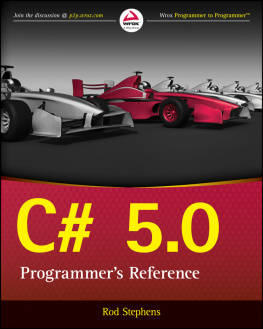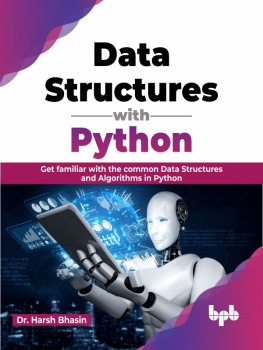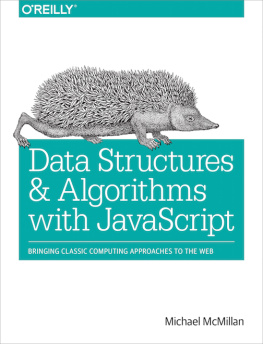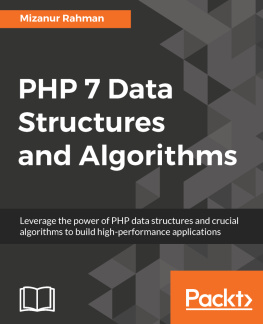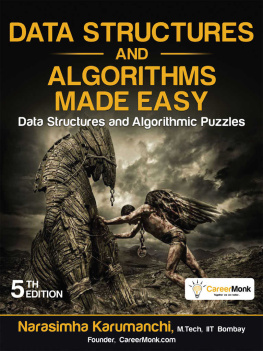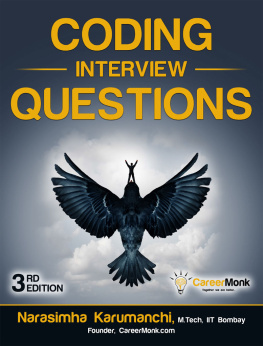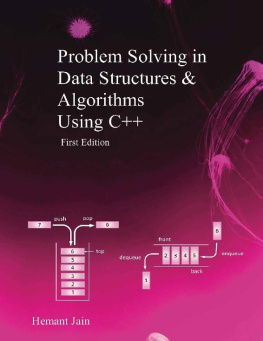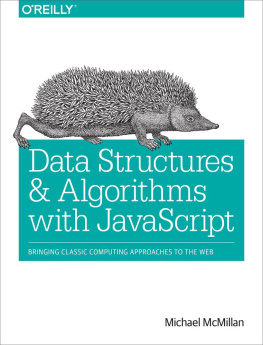
Introduction
Algorithms are the recipes that make efficient programming possible. They explain how to sort records, search for items, calculate numeric values such as prime factors, find the shortest path between two points in a street network, and determine the maximum flow of information possible through a communications network. The difference between using a good algorithm and a bad one can mean the difference between solving a problem in seconds, hours, or never.
Studying algorithms lets you build a useful toolkit of methods for solving specific problems. It lets you understand which algorithms are most effective under different circumstances so that you can pick the one best suited for a particular program. An algorithm that provides excellent performance with one set of data may perform terribly with other data, so it is important that you know how to pick the algorithm that is the best match for your scenario.
Even more important, by studying algorithms you can learn general problem-solving techniques that you can apply to other problems even if none of the algorithms you already know is a perfect fit for your current situation. These techniques let you look at new problems in different ways so that you can create and analyze your own algorithms to solve your problems and meet unanticipated needs.
In addition to helping you solve problems while on the job, these techniques may even help you land the job where you can use them! Many large technology companies, such as Microsoft, Google, Yahoo!, IBM, and others, want their programmers to understand algorithms and the related problem-solving techniques. Some of these companies are notorious for making job applicants work through algorithmic programming and logic puzzles during interviews.
The better interviewers don't necessarily expect you to solve every puzzle. In fact, they will probably learn more when you don't solve a puzzle. Rather than wanting to know the answer, the best interviewers want to see how you approach an unfamiliar problem. They want to see whether you throw up your hands and say the problem is unreasonable in a job interview. Or perhaps you analyze the problem and come up with a promising line of reasoning for using algorithmic approaches to attack the problem. Gosh, I don't know. Maybe I'd search the Internet, would be a bad answer. It seems like a recursive divide-and-conquer approach might work would be a much better answer.
This book is an easy-to-read introduction to computer algorithms. It describes a number of important classical algorithms and tells when each is appropriate. It explains how to analyze algorithms to understand their behavior. Most importantly, it teaches techniques that you can use to create new algorithms on your own.
Here are some of the useful algorithms this book describes:
- Numerical algorithms such as randomization, factoring, working with prime numbers, and numeric integration
- Methods for manipulating common data structures such as arrays, linked lists, trees, and networks
- Using more-advanced data structures such as heaps, trees, balanced trees, and B-trees
- Sorting and searching
- Network algorithms such as shortest path, spanning tree, topological sorting, and flow calculations
Here are some of the general problem-solving techniques this book explains:
- Brute-force or exhaustive search
- Divide and conquer
- Backtracking
- Recursion
- Branch and bound
- Greedy algorithms and hill climbing
- Least-cost algorithms
- Constricting bounds
- Heuristics
To help you master the algorithms, this book provides exercises that you can use to explore ways you can modify the algorithms to apply them to new situations. This also helps solidify the main techniques demonstrated by the algorithms.
Finally, this book includes some tips for approaching algorithmic questions that you might encounter in a job interview. Algorithmic techniques let you solve many interview puzzles. Even if you can't use algorithmic techniques to solve every puzzle, you will at least demonstrate that you are familiar with approaches that you can use to solve other problems.
Algorithm Selection
Each of the algorithms in this book was included for one or more of the following reasons:
- The algorithm is useful, and a seasoned programmer should be expected to understand how it works and use it in programs.
- The algorithm demonstrates important algorithmic programming techniques you can apply to other problems.
- The algorithm is commonly studied by computer science students, so the algorithm or the techniques it uses could appear in a technical interview.
After reading this book and working through the exercises, you will have a good foundation in algorithms and techniques you can use to solve your own programming problems.
Who This Book Is For
This book is intended primarily for three kinds of readers: professional programmers, programmers preparing for job interviews, and programming students.
Professional programmers will find the algorithms and techniques described in this book useful for solving problems they face on the job. Even when you encounter a problem that isn't directly addressed by an algorithm in this book, reading about these algorithms will give you new perspectives from which to view problems so that you can find new solutions.
Programmers preparing for job interviews can use this book to hone their algorithmic skills. Your interviews may not include any of the problems described in this book, but they may contain questions that are similar enough that you can use the techniques you learned in this book to solve them.
Programming students should be required to study algorithms. Many of the approaches described in this book are simple, elegant, and powerful, but they're not all obvious, so you won't necessarily stumble across them on your own. Techniques such as recursion, divide and conquer, branch and bound, and using well-known data structures are essential to anyone who has an interest in programming.
Note
Personally, I think algorithms are just plain fun! They're my equivalent of crossword puzzles or Sudoku. I love the feeling of putting together a complicated algorithm, dumping some data into it, and seeing a beautiful three-dimensional image, a curve matching a set of points, or some other elegant result appear!
Getting the Most Out of This Book
You can learn some new algorithms and techniques just by reading this book, but to really master the methods demonstrated by the algorithms, you need to work with them. You need to implement them in some programming language. You also need to experiment, modify the algorithms, and try new variations on old problems. The book's exercises and interview questions can give you ideas for new ways to use the techniques demonstrated by the algorithms.
To get the greatest benefit from the book, I highly recommend that you implement as many of the algorithms as possible in your favorite programming language or even in more than one language to see how different languages affect implementation issues. You should study the exercises and at least write down outlines for solving them. Ideally you should implement them, too. Often there's a reason why an exercise is included, and you may not discover it until you take a hard look at the problem.
Finally, look over some of the interview questions available on the Internet, and figure out how you would approach them. In many interviews you won't be required to implement a solution, but you should be able to sketch out solutions. And if you have time to implement solutions, you will learn even more.
Next page

